Movie Toast with Morning Tea ~ 1935
The year 1935 has a distinctive and unmistakable stamp in its story telling; it exudes an air of closeness and familiarity, a sense of direction and responsibility.
In all, 154 films were made and released. Premier studios like Imperial Films, Kolhapur Cine, Madan Theatres, Mahalaxmi Cine, Ranjit Movietone, Saroj Movietone, Wadia Movietone continued to churn out the typical formula laden costume drama, fantasy, mythological, stunt and also social films with different measure of success. There were clear indications that the audience wanted something more meaningful and matured, pithy and purposeful.
Prakash Pictures too joined the fray with their action and costume films before making name for themselves in the mythological, musical and social films of the 40s and 50s.
Some of noteworthy films of the year clearly belonged to the relatively newer studios: “Devdas” and “Dhoop Chhaon” (New Theatres), “Jawani Ki Hawa” (Bombay Talkies), “Dr. Madhurika” and “Judgement of Allah” (Sagar), “Chandrasena” and “Dharmatma” (Prabhat).
New Theatres
After its first break through film “Chandidas” in 1934, New Theatres came up with the celluloid version of Saratchandra Chatterjee’s controversial but all time classic and popular novel “Devdas”. The film was made with the same title in Bengali and Hindi and both were directed by Pramathesh Barua. While Barua himself played Devdas in the Bengali version, the role in the Hindi version was played by K L Saigal. The roles of Paro and Chandramukhi in the Hindi version were enacted by Jamuna and Rajkumari respectively.
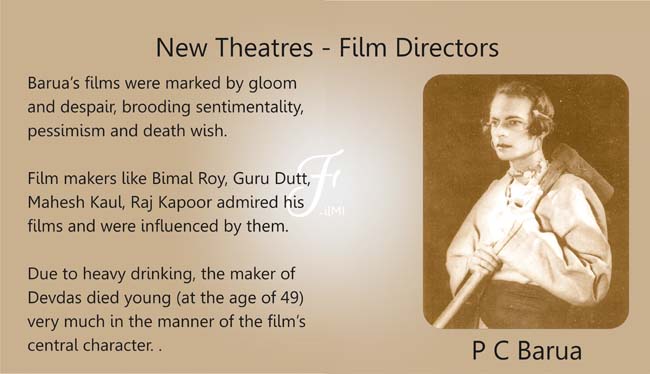
“Devdas” was all about the doomed love between a zamindar son and his poor neighbour’s daughter Parbati (Paro). Their love remains unrequited and the doomed and disillusioned Devdas seeks solace in alcohol and in the care and compassion of Chandramukhi, a girl of ill repute.
If one observes minutely, the character of Devdas is a anti hero but emotionally fragile and tragic who is torn between his inner conflicts and a driving passion. What touches and moves us are his weaknesses, his moral ambiguity, indecisiveness, struggle with his conscience and, not the least, his humanity which differs and comes across sharply in his relationship with his family, Paro, Chandramukhi and his faithful servant Dharamdas.
Barua was loyal to the novel but deviated only in its treatment. By avoiding heavy melodrama and clichéd stereotypes, he raised the film to a noble tragedy. The film remains a benchmark in the genre of romantic tragedies.
Timir Baran made his debut as a composer with “Devdas”. The two evergreen classics: Balam aaye baso more mann mein and Dukh ke ab din beetat naahin, both rendered by K L Saigal remain among his career best songs.
Kidar Sharma too got his break as a lyrics and dialogue writer with this film and as a poster painter and screen painter with two more films of New Theatres made in the same year viz. “Dhoop Chhaon” and “Inquilab” (After The Earthquake). Both these films are significant for two different reasons.
The film finally belonged to K L Saigal. He was born to ‘live’ the role of Devdas. And, like the death of the alcohol afflicted character in the film, he died in real life too – sick, sullen, somber and sozzled at the age of 42 in January 1947!!
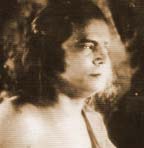
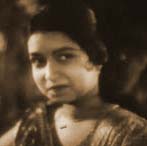 “Dhoop Chhaon”, starring Pahari Sanyal, K C Dey, Uma Shashi, was a landmark film of the year. The film was directed by Nitin Bose. He had joined the studio as a photographer and then went on to direct films like “Chandidas”, “Dushman”, “President”, “Dhartimata”. Credit goes to him for elevating the films of New Theatres technically as also for introducing ‘pre-recorded’ or ‘playback’ singing.
“Dhoop Chhaon”, starring Pahari Sanyal, K C Dey, Uma Shashi, was a landmark film of the year. The film was directed by Nitin Bose. He had joined the studio as a photographer and then went on to direct films like “Chandidas”, “Dushman”, “President”, “Dhartimata”. Credit goes to him for elevating the films of New Theatres technically as also for introducing ‘pre-recorded’ or ‘playback’ singing.
During the filming of the song Main khush hona chaahun, khush no na sakun, Bose was beset with some technical problem. Along with his younger brother Mukul Bose, a sound engineer, he made a promising attempt at introducing the ‘playback’ technique though it came in full force after almost a decade.
The song was sung by Parul Ghosh, Suprova Circar and Harimati and composed by R C Boral. The film had some memorable songs like Baba mann ki ankhen khol, Teri gathri mein laaga chor musafir jaag zara, Andhe ki laathi tu hi hai all in the voice of K C Dey.
The year saw two other films of New Theatres: “Karvaan-e-Hayaat” starring K L Saigal and Rajkumari and “Inquilab” (also known as After The Earthquake). The latter film was directed by Debaki Bose and had an impressive array of stars like Prithviraj Kapoor, Durga Khote, K C Dey, Nawab. The great showman Raj Kapoor made his first screen appearance as a child star in the film. He was just about 11 years then.
Bombay Talkies
After making a few silent films like “The Light of Asia”, “Shiraz”, “A Throw of Dice” with German collaboration, Himanshu Rai returned to India with his actress-wife Devika Rani. He then made a bilingual “Karma” in 1933 and established his now iconic studio Bombay Talkies in 1934.
The first film made under the banner of Bombay Talkies was “Jawani Ki Hawa” starring Najam ul Hussain and Devika Rani. Legendary actor Ashok Kumar made a fleeting appearance in a shot in a train sequence.
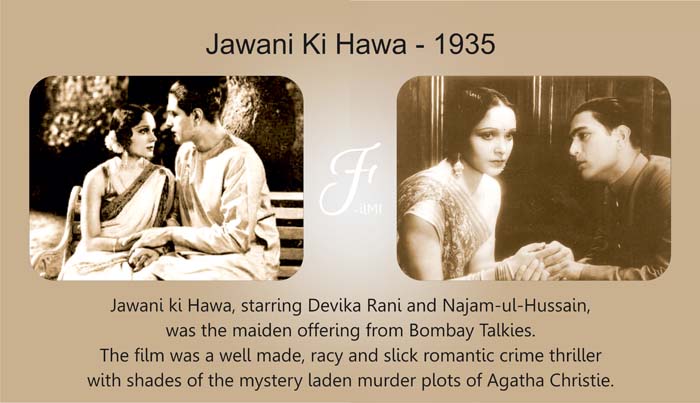
The film was directed by German director Franz Osten and photographed by Josef Wirsching.
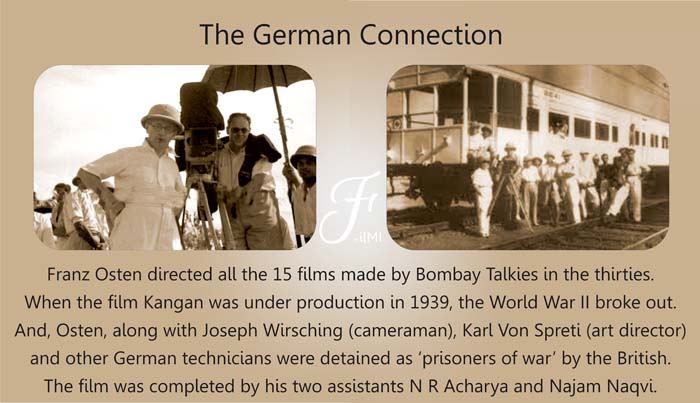
The film introduced a woman composer named Khorshed Minocher Homji aka Saraswati Devi.
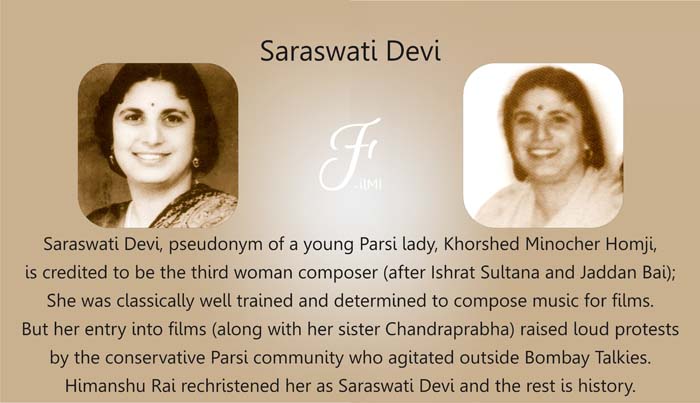
Prabhat
After the spectacular success of “Amrit Manthan” in 1934, Shantaram directed two films “Chandrasena” and “Dharmatma” which were released in 1935.
“Chandrasena” was made earlier by Shantaram as a silent film by the same name and released in 1931. The talkie version, an episode from the great epic Ramayana, was a visual delight with the Shantaram’s innovative camera movements and special effects of human figures and arrows flying and Hanuman picking up human figures (a must in mythologicals).
Keshavrao Bhole composed music for the film and he had the knack of producing different ‘sound’ in his music for different genre of films. He was more ‘modern’ as compared to his predecessor Govindrao Tembe who was more conservative and traditional.
Taking hints from Mahatma Gandhi’s crusade against social evils like caste system and untouchability, Shantaram made a bold attempt to make “Dharmatma”. The film was based on the life of the 16th century poet Eknath who too opposed these social evils. It was originally titled as “Mahatma” (named after Gandhi ji) but following the censor objection for its ‘direct reference to the national leader’, Shantaram renamed the film as “Dharmatma”.
Marathi stage actor Bal Gandharva played the title role. But he was so used to playing female roles in several plays for over two decades, he found himself totally out of sync in the role of a male protagonist. Quite naturally, the film was a disappointment at the box office.
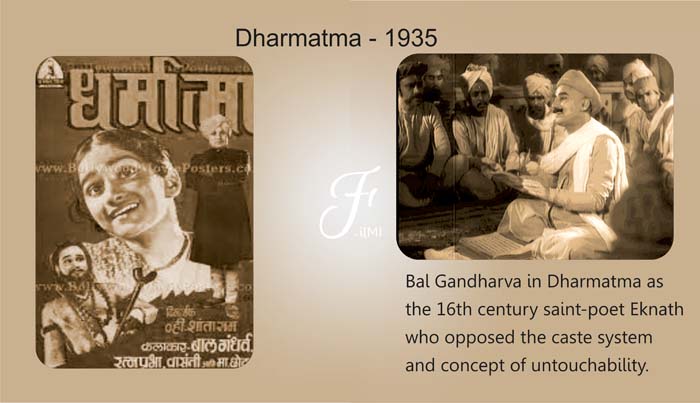
Master Krishnarao made his debut as a composer in “Dharmatma”. He was a purist and had consummate expertise in Khayal, Thumri and other forms of classical music. Incidentally, legendary maestro Vasant Desai assisted Krishnarao and also played a small role in the film.
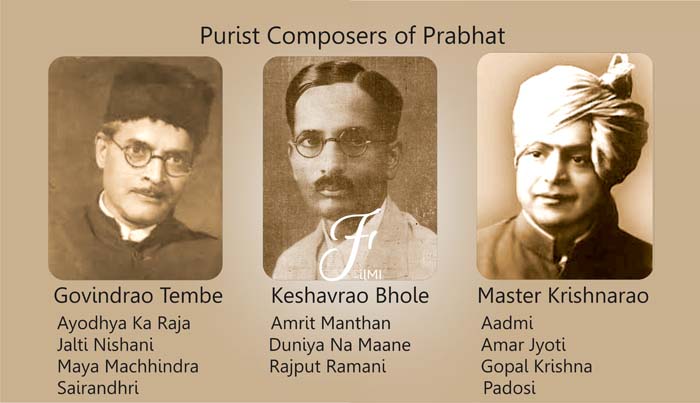
Sagar Movietone
Sagar, like Ranjit, was known for providing unabashed entertainment through its costume, fantasy, mythological and stunt films. In 1935, the studio turned to making films with social message. Based on a novel by Kanhaiyalal Munshi, the partners of Sagar made “Dr. Madhurika” with Sabita Devi in the title role and Motilal as her lawyer husband. ‘Women’s Director’ Sarvottam Badami directed the film. The film had music by Pransukh Nayak.
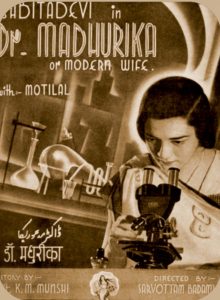 “Dr. Madhurika” was a film way ahead of its time. The central character was portrayed as a career conscious woman with modern day mindset, thinking and values. Liberated and living on her terms, the film goes a step further and shocks the audience when Madhurika, as a proponent of population control, refuses to bear a child. However, after several dramatic twists and turns, she is shown as giving up her career for a better family conforming to social values.
“Dr. Madhurika” was a film way ahead of its time. The central character was portrayed as a career conscious woman with modern day mindset, thinking and values. Liberated and living on her terms, the film goes a step further and shocks the audience when Madhurika, as a proponent of population control, refuses to bear a child. However, after several dramatic twists and turns, she is shown as giving up her career for a better family conforming to social values.
The climax of the film did not go down well with certain sections of the society. Progressive leader Kamala Chattopadhyay (wife of poet Harindranath Chattopadhyay) vehemently criticised the ending by saying “any woman with a steady head above her shoulders cannot be represented by Dr. Madhurika”.
Despite all the controversy and criticism, the film was a big hit and stood out from the rest of Sagar’s formula films. The film with all its modernity had an unconventional song Mori pyaari pyaari gaiyya aur doodh ki dilwaiyya which was rendered by Sabita Devi.
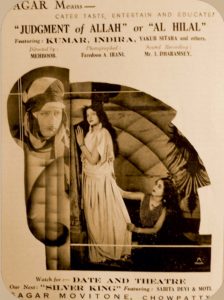 During the year, Sagar released another film after which the ‘creation became bigger than the creator’. The film was “Judgement of Allah” which was directed by Mehboob Khan.
During the year, Sagar released another film after which the ‘creation became bigger than the creator’. The film was “Judgement of Allah” which was directed by Mehboob Khan.
Mehboob’s journey from an ‘extra’ at Imperial and Sagar to a filmmaker ExtraOrdinaire is simply inspiring and fascinating. Between 1927 and 1930, he was seen as an ‘extra’ in Imperial’s silent films like “Alibaba and Forty Thieves”, “Shirin Khusru” and a few others. Thereafter, between 1931 to 1934, he did small roles of varied types in films of Sagar like “Veer Abhimanyu”, “Romantic Prince”, “Bulbul-e-Baghdad”, “Chandrahas”, “Mahabharat”, “Mirza Sahiban”, “Premi Paagal”, “Grihalaxmi”, “Naachwali”, “Sati Anjani”.
Mehboob was not content doing these films; his interest was in doing something beyond this. He would listen to scripts of aspiring writers who came to Sagar, give unsolicited but valuable suggestions, give some dramatic twists and turns and, at the end, contribute something significant to the story. Because of his humble background, disagreeable looks and lack of education, none gave a serious thought to his latent talent or his potential except Faredoon Irani, the studio’s cameraman. Irani had taken a liking for Mehboob from the beginning.
Mehboob would write his own scripts and he was too eager to venture into direction. He would express his desire to Faredoon Irani who was confident about his prodigy, a genius in the making. He would frequently ask Irani to speak to the bosses who would just brush aside his request saying “what can be expected of an illiterate fellow; how can he write scripts and direct a film; he has no experience of anything; he works as an ‘extra’ and let him continue with that…”
Irani tried his best to convince the bosses and went to the extent of taking personal responsibility for what Mehboob would shoot on trial basis. He staked his salary if the bosses were not happy with the end results. Such was the confidence and conviction of Irani. And, Mehboob didn’t let down his God Father!
Finally, the bosses agreed, Mehboob read out the story written by him, assembled his stars and went about shooting. He was all charged and shot for three days (time given to him for shooting) and showed the rushes to the bosses. Chimanlal Desai and Dr. Ambalal Patel (the partners of Sagar) and few other key persons of the studio watched the rushes with bated breath and by the end of it, they were dazed and amazed, excited and exhilarated. They had discovered a great director in the ‘extra’ whom they rebuked and ridiculed. The green signal was given and Mehboob was all set to take up the director’s mantle.
Inspired by Cecil DeMille’s “The Sign of the Cross”, Mehboob wrote his script and titled the film “The Judgement of Allah”. He had an ensemble of stars working under him: Kumar, Yakub, Sitara, Indira, Azurie and others. Music was by Pransukh Nayak. And, of course, Faredoon Irani was the cinematographer.
Working ceaselessly day and night, Mehboob wrapped up the shooting in five months with the outdoor scenes shot in Hyderabad. And, finally the film was made, released and it went on to become a huge hit. In years to come, the creation became bigger than the creator.
The film and its spectacular success was a testament to Mehboob’s conviction, dedication, perseverance and talent bestowed from the heaven by Allah!!
Ranjit
Ranjit was known for the unabashed entertainment its films provided. But, with rival companies like Bombay Talkies, New Theatres and Prabhat setting new standards, the company’s films started getting lukewarm response. Among the six releases of Ranjit during the year, “Barrister’s Wife” was the only noteworthy and successful film. The film starred Gohar (in a double role) and E Billimoria. Later year films like “Mamta” (1966) and “Dard” (1980) were inspired by the film.
Notable Natter ~ 1935
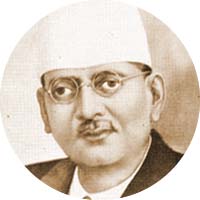 A mention was made of the most prolific and popular playwright Agha Hashr Kashmiri in the earlier year. He had great command over Arabic, Hindi, Persian, Sanskrit and Urdu. His writings had a major impact on the development of Indian Cinema. Many of his plays won country wide acclaim and were adapted successfully for films by Madan Theaters and New Theaters. To quote B D Garga, “such was his popularity that when he died in June 1935, all studios remained closed for the day and theaters suspended their films shows as a mark of respect to the Indian Shakespeare”
A mention was made of the most prolific and popular playwright Agha Hashr Kashmiri in the earlier year. He had great command over Arabic, Hindi, Persian, Sanskrit and Urdu. His writings had a major impact on the development of Indian Cinema. Many of his plays won country wide acclaim and were adapted successfully for films by Madan Theaters and New Theaters. To quote B D Garga, “such was his popularity that when he died in June 1935, all studios remained closed for the day and theaters suspended their films shows as a mark of respect to the Indian Shakespeare”
Leela Chitnis made her acting debut in an eminently forgettable film “Dhuandhaar”.
Shobhana Samarth also made her acting debut in Kolhapur Cinetone’s “Nigah-e-Nafrat” opposite Master Winayak (father of Nanda).
Nadia made her debut as a stunt actress in Wadia’s “Hunterwali” in which she wields the ‘hunter’ and uses it without fear. Soon she came to be hailed as the Fearless Nadia!
Sohrab Modi, acclaimed for his historical films, debuted as a director with Stage Film Company’s “Hamlet”. Also titled “Khoon Ka Khoon”, the film was a screen adaptation of Shakespeare’s play by the same name. Modi played Hamlet opposite Naseem who played Ophelia. Naseem was the mother of Saira Banu and incidentally, her mother Shamshad Begum was also a part of the cast.
Anil Biswas made his debut as a composer with Eastern Arts’ “Dharam Ki Devi” starring Kumar and Sardar Akhtar. The film was directed by Hiren Bose. The same year, he gave music jointly with Ustad Jhande Khan in the company’s “Bharat Ki Beti” directed by P Atorthy.
Ghulam Haider, who brought a musical revolution in the early 40s, made his debut as a composer with “Swarg Ki Seedhi”. The film was directed by A R Kardar.
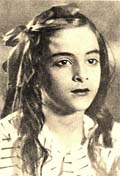
And, last but not the least, the hit romantic pair of Raj Kapoor – Nargis in the later years saw its genesis in 1935. While Raj Kapoor made his screen appearance as a young boy of eleven in New Theatre’s “Inquilab”, Nargis debuted as child star Baby Rani (barely six years) in “Talash-e-Haq” in which her mother Jaddanbai was in the lead opposite Yakub. The year is a witness to the blossoming of two flowers on the filmi firmament that went on to bloom in the cinematic paradise from late 40s to mid 50s.
Await more Movie Toast with Morning Tea till next week
Manohar ‘M T’ Iyer

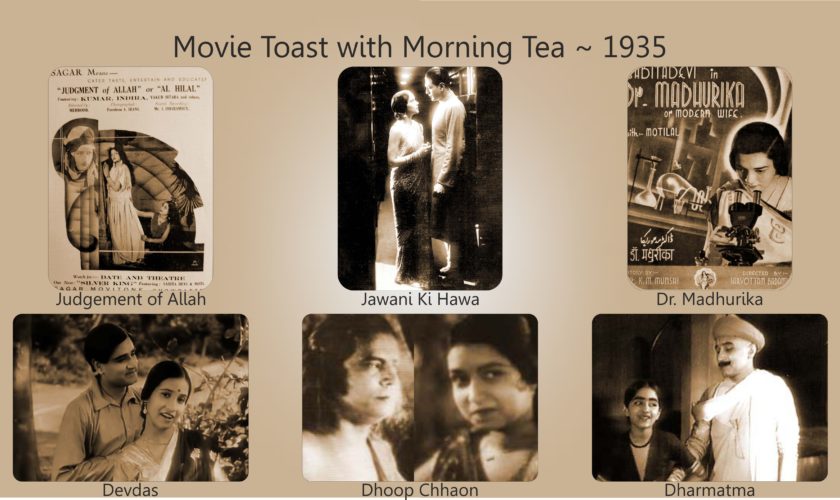
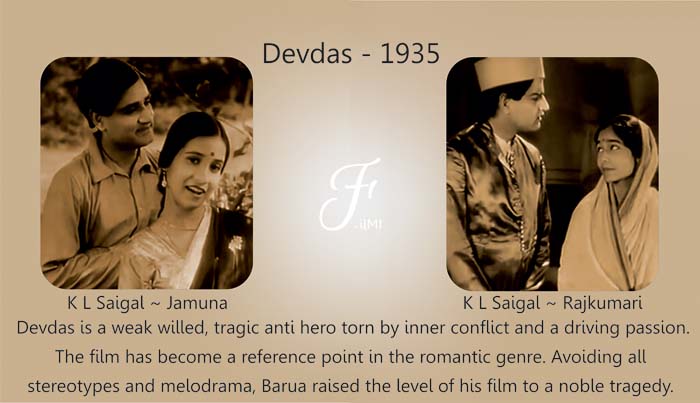
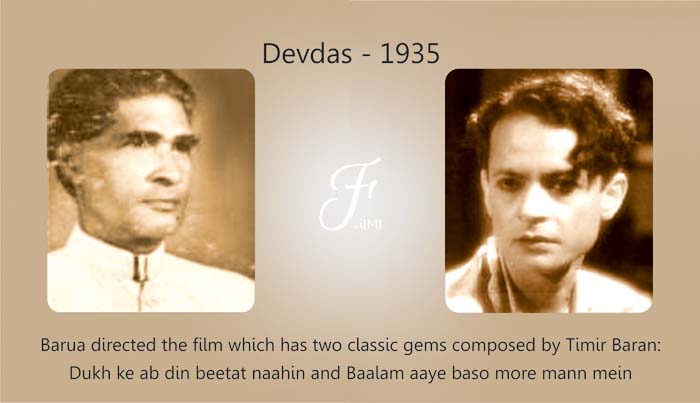

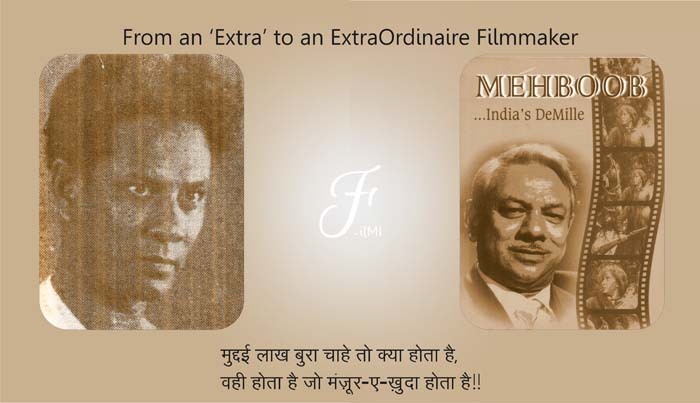
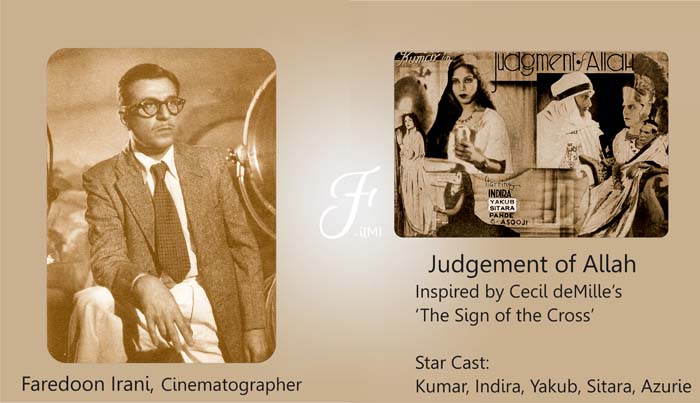
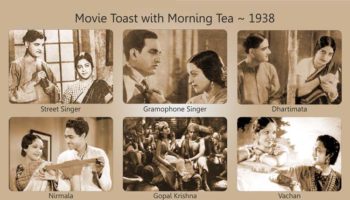
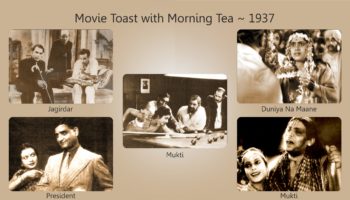
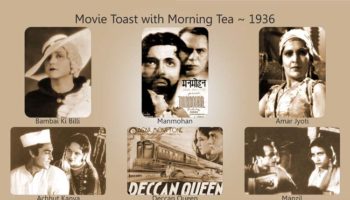
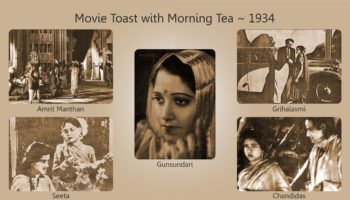
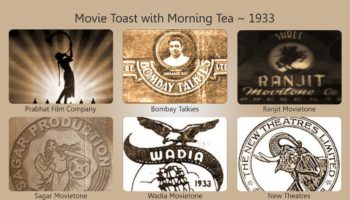
Fantastic read. Wonderful way to start the day.
Thank you sir. Hope you have gone thru the toasts of the earlier years.
Excellent writing and a very informative article dwelling on so old a time of Bollywood… Kudos to the walking Bibliograph, Shri Manohar ji…
Thank you very much Sastry for evincing interest in movies and music of yore. Its a very intellectually stimulating invigorating treat for the host as well as well as the guest.
As the saying goes..those who forget history are condemned to repeat it!
You, Mr. Iyer, are a national historian of the forgotten archives of the biggest entertainment industry in the world!
I, for one, would have been poorer had it not been for you sharing these golden nuggets.
As always, this article too is well researched, informative, concise but with quite a few “Oh really!” moments!!
Kudos Mahoharji…!!
Thank you very much sir. Am so glad despite your preoccupations, you found time to go through it minutely.
I somehow felt this entire exercise is an intellectually stimulating delectable treat for both the host and the guest. Hence, I shared.
Sharing multiplies the joy manifold.
Yes, there are quite a number of ‘Ah and Oh really’ moments. Particularly the rise of Mehboob Khan from a mere ‘extra’ to a filmmaker ExtraOrdinaire!
This is as told by MK to Bunny Reuben about sixty years back soon after Mother India. BR narrated the entire Mehboob MahaKarnama vividly to me may be more than ten years back. There are more to share which I will when I write on Mehboob Khan.
Also, equally interesting was to find that Alam Ara, the first talkie film, was also the FIRST FILM ON THE LOST AND FOUND FORMULA. I was as thrilled as Columbus must have been after discovering America!!.
Vishesh Thanks to your sir for the awe inspiring response and reaction.